As we know, Projectors are amazing tools that we can use in multiple scenarios. But like other electronic devices, they also have a dark side. They could heat and cause several problems with that. When it comes to projector causes, the ones that have dead pixels.
Now, what are dead pixels? Simply, The dead pixels are the black and white pixels that can’t be fixed easily. If a projector has a lot of these dead pixels, it will make your image look bad quality and make it hard to watch.
This article provides you with information about what are projector dead pixels in detail and how they affect your projectors. We also show you how to fix dead pixels in projectors and how to prevent them from occurring in the first place.
What are projector dead pixels?
Projector dead pixels (just like stars in the sky at night) are just annoying. So it is important to know what are dead pixels exactly. Sometimes when you power on your projector, you will probably notice these weird black or white spots appearing on your screen. These are called the “dead pixels”. The dead pixels can be the “white dots” or “black dots”.
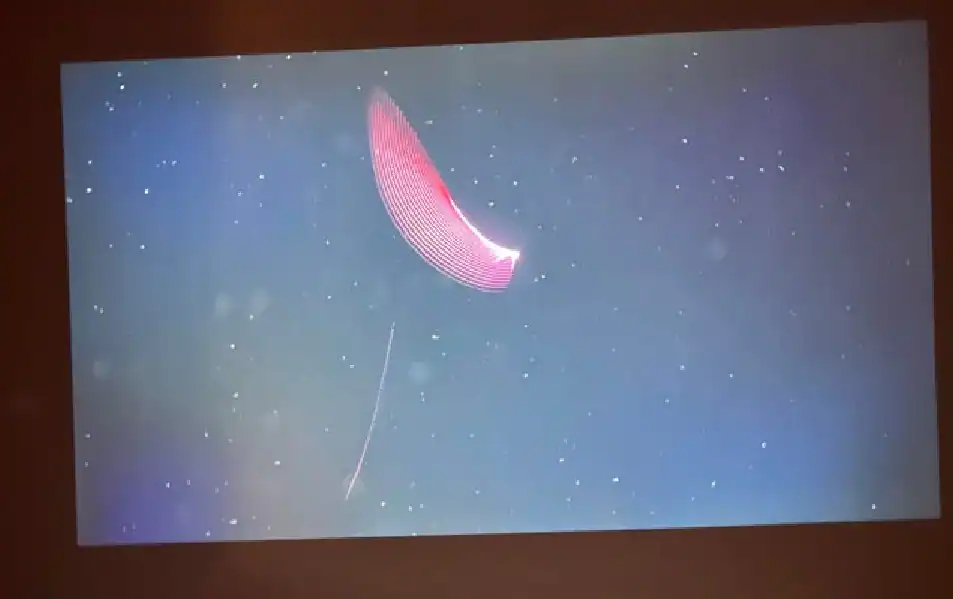
You can find them on any kind of video screen. They can appear anywhere on the screen. They appear all over the place. It doesn’t matter how many dead pixels you see, the projector will still function properly.
Why Dead Pixels? – Lack of Maintenance & Care
The dead pixels may be caused by dust that gathers inside the projector. Therefore, It is important that you clean your projector’s lens every now and then. This will help you to get rid of the dead pixels.
You can take a little time to clean the inside parts of your projector. For that, you can use a soft cloth to remove the dust until you wipe it away properly.
What are projector dead pixels: Causes
There are several reasons why you may get dead pixels on your projector. Those causes are as below:
Blots or Dust
Dust is very dangerous to projectors because it clogs the lenses and DMD chips. If the projector is dirty or dusty, you can expect that the spots you see will appear on the screen. It is very important to avoid touching the screen directly. Even though your hands are clean, if the surface is dirty, the particles can stick to your hands. Then, when you touch the screen, you can see streaks on it.
A projector might be overheated due to severe dust. When this happens, you will be tempted to open it up. But doing so can cause you to scratch the inside of your projector so badly that it will be totally unusable. It is recommended that open or dissembles are done once you know how to do that.
If dust particles get stuck inside the projector, they will be carried into the projector’s DMD chip. The particles will then make the pixels turn off and off. This can damage the DMD chip. So as you can see few of the examples of how the Blots or Dust impact the projector.
Component Overheated
When you turn your projector on, the DMD (digital microdisplay) inside the projector heats up. Heatsinks behind the DMD chip are designed to cool down the DMD. If the heatsink doesn’t work, the DMD might overheat.
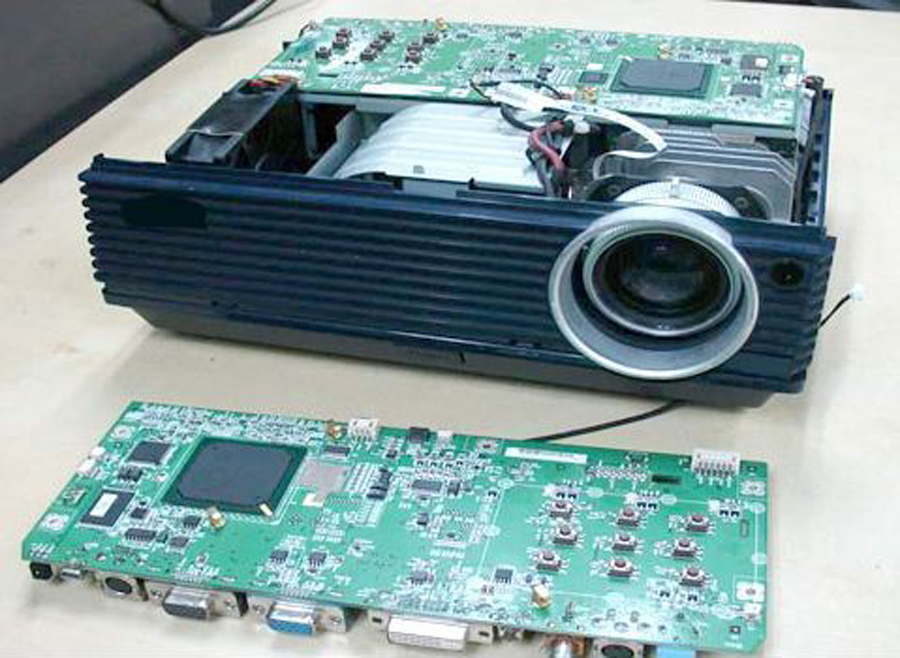
If it does, the DMD chip will start to glow, and the picture will become very faint. If the DMD becomes overheated, the picture on the screen will be very dim or distorted, or dead pixels occurs.
LCD Panel Damaged
The next cause of dead pixels could be LCD Panel damage. Yes, the projector uses light rays to form images on the LCD screen. The light rays can easily damage the LCD panel on the screen when the light is not properly focused on the screen. The image on the screen will look blurred or distorted.
In most cases, the LCD panel can get damaged by too much heat, dust, or moisture. A damaged LCD panel will show the dead pixels on the screen that you can see when you watch the image on it.
An Aging or Broken DMD Chip
The projector’s LCD screen is usually placed on top of the DMD chip. The light source should be placed on the back of the chip. This helps to avoid reflection on the screen. Therefore when the projector works, you see a white light.
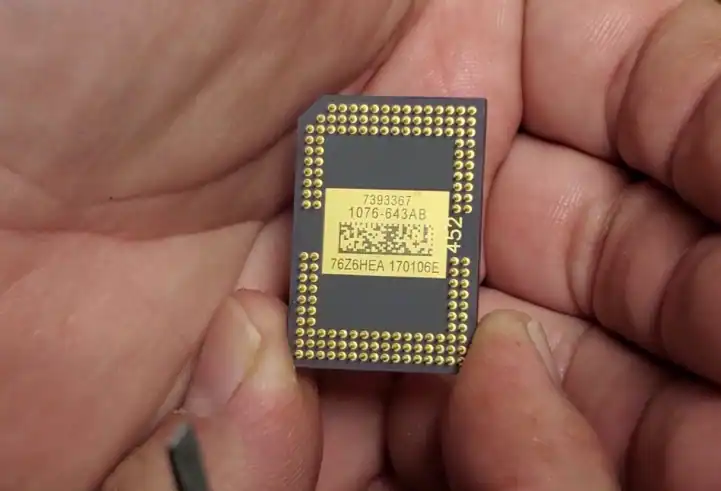
If you see some black dots instead of white light, the problem could be due to an aging or broken DMD Chip. When the DMD chip breaks, you might find that you are getting a bunch of dead pixels (usually blacks) on your projection screen.
It could be very irritating if you were watching a movie. You should remove the dead pixels as they can disturb the watching experience.
Failure Of Pixels
If you are getting a display of black dots or lines, it may be due to the dead pixel problem. Dead pixels are a problem because they create flaws in your display. You should make sure to check the dead pixel problem if you are having any issues with your display.
In case you see these continually, you should first ensure that you have a clean connection between the projector and your computer. Also, you may have to change the lens cover if you are getting a distorted picture.
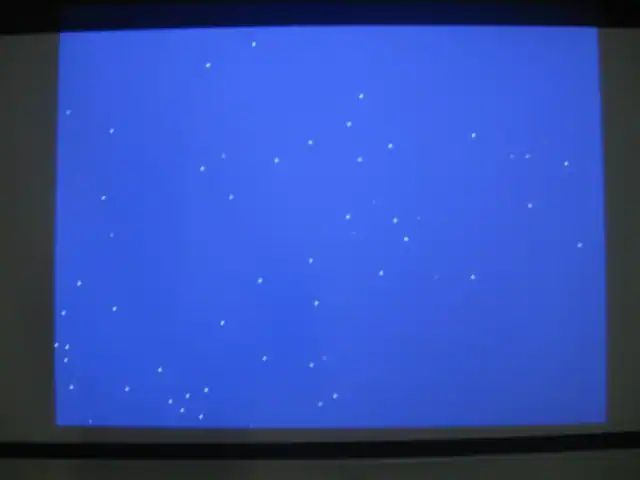
Apart from that, if you are getting a distorted picture or you are seeing black dots or lines, it is likely that your projector has a dead pixel problem.
You May Also Find Helpful:
- Why Projector is Blurry on One Side? (Troubleshooting Tips)
- How to Troubleshoot Shadow on a Projector?
- Why Projector Has Black Spots on Screen?
- How to Connect iPad to Projector (Step-By-Step) Guide
- How to Connect a Phone to The Projector via USB?
What are projector dead pixels: Solutions
One of the most common problems with a projector is the issue of dead pixels. Sometimes a lot of dead pixels appear on the screen, which makes the image look fuzzy.
There are many causes of the problem of dead pixels. Dead pixels are a big problem for watching the content on a screen as they distract. If you want to get rid of this problem, you should follow the below solutions.
Projector Cleaning
Like other devices, projectors also require periodic maintenance. Dust and dirt are normal parts of your project and they will build up over time. You can clean your projector in a number of different ways. One of the easiest ways is to use a dry cloth.

You can also blow out the dust with canned air. You will have to experiment to see which method works best for your projector. Be sure to buy the right cleaning supplies (like isopropyl alcohol) for your projector. They should be easy to find online and inexpensive.
Note: It is also important to read the instructions before you start cleaning the projector. Be careful while doing this. You can harm the projector if you are not careful. The best way to clean the projector is to use a brush or a rag. A small piece of fabric will also work well.
Prevent Component from Overheating
The next important thing that you can do is check periodically the component heatsink and the fan. These are the components that convert the heat into cool air. The heatsink is the main component that converts the heat from the DMD chip.

The fan is also important because it keeps the heatsink cool. If these components are not working well, the air that they produce won’t be as efficient as it should be. If you have a dead pixel, it may be because the heatsink is broken. If so, consider replacing them. Thus you can get rid of a projector that has dead pixels.
Replacing Damaged LCD
Talking about the LCD panel responsible to generate the content and uses a combination of red, green, and blue phosphors that produce the actual color of the image. But, when the panel gets dirty, the phosphor loses its ability to convert the light from the projector into the exact color that you see.
The result is that you will see a black spot on the screen that looks like a dead pixel. In order to fix this problem, you need to replace the damaged LCD panel with a new one.
Repairing or Replacing DMD Chip
There are ways to repair this dead pixel problem. For instance, you could ask your local repair shop to repair it. It is possible to replace the broken DMD chip with a new one.
However, this can be expensive. You could also repair or replace it yourself using some basic DIY tools. It will require a lot of time and effort.
Projector Dead Pixels: Prevention is Better than Cure
All devices require some regular maintenance and repair to keep them functioning properly. Even though projectors are not much different from any other device, the difference between them and all others is that the life of the projectors is shorter than other devices because projectors are exposed to the environment.
Therefore, they are more prone to damage and failure. But, there are a few preventions also to keep your projector working.
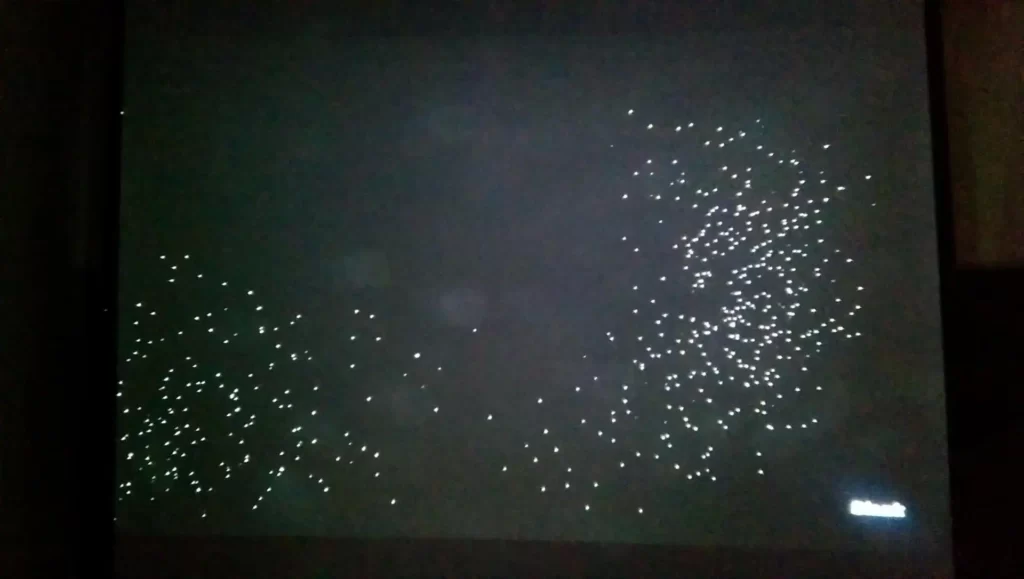
When you are using your projector, you should take caution not to let your fingers touch it. You should use protective coverings like gloves or even cloth to avoid any physical damage to your equipment.
You should also avoid touching the lens. You may damage the lens when you do this. You should use a dust mask to prevent dust from entering the projector. But keep in mind don’t cover the ventilation holes of your projector.
Projectors are easy to maintain, but they may die after a while if they are exposed to too much heat. You should protect your projectors from overheating by placing them on a flat surface when you are not using them.
What are projector dead pixels: FAQs

Can dead pixels actually be fixed?
When we talk about a dead pixel, a dead pixel is a tiny dot of light that appears on the screen. It can occur on any type of display, including a projector, laptop, computer, tablet, smartphone, or digital camera. Some displays have fewer dead pixels than others.
It can be a bit annoying to see dead pixels on your screen, but the good news is that they can be fixed. Yes, you may be able to fix the dead pixel. You can repair it or go service center to get repaired for you. Sometimes the hardware issue is a bit critical therefore it is easily repaired at the service center by an expert rather than at home.
Are dead pixels permanent?
You may have noticed that some areas of your screen have turned black. Sometimes, they’re just dark spots, and sometimes they look like dead pixels. If a dead pixel appears on your projector screen, it may not necessarily be permanent. The good news is that there are several ways to fix the problem.
But before fixing the dead pixels, I recommend that you replace your machine if you have the option to replace it. But in case the warranty has expired, there are other ways to get rid of the dead pixels. There are many ways to fix the dead pixels which we’ve discussed earlier as well. The most reliable solution is to replace or repair the DMD chip
How Do You Detect Dead Pixels?
When we talk about the types of pixels, there are three types of pixels. Mainly, these are Red, blue, and green which are the main colors used in the graphical display. These three colors are used to create images and videos. If your screen shows black pixels repeatedly in the same place they are sometimes called “dead pixels.” Sometimes the pixels are dark or completely blank. This is the case with dead pixels.
Do dead pixels go away over time?
Some people who buy new projectors think that they can get rid of the dead pixels on the screen just by waiting. The truth is, it doesn’t go away on its own. If you want to fix the problem, you should take it to a service center. Or You can clean the projector with special equipment and replace the damaged pixels (by repairing the DMD chip) with fresh ones.
Wrapping It Up
As you’ve got Some of the reasons why you can see these dead pixels are faulty lenses, the failure of the DMD chips, malfunctioning internal circuits, overheated components, etc. There are different solutions to remove these dead pixels. You can take your projector to your repair shop or service center.
They can repair or replace dead pixels. Another option is to replace the projector with a new one. It will cost you a lot of money. If you don’t like to take your projector to a repair shop or service center, you can look for a solution and try to fix it yourself.
As an experienced Software Engineer in a Projection-Based Technology Company, I love sharing my Knowledge to utilize and help others to learn more about Projectors. Thus one can get the right Projector for their needs.


